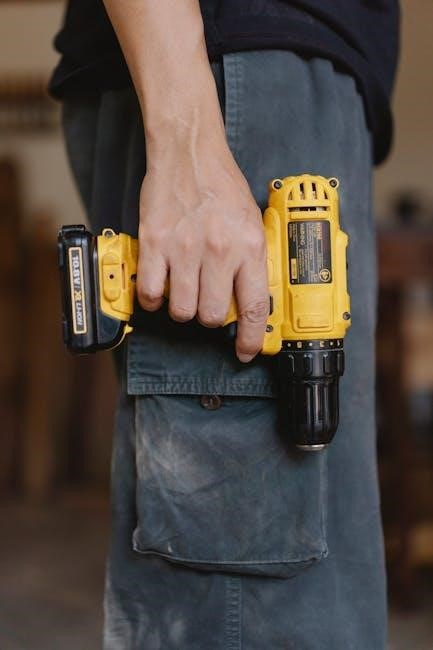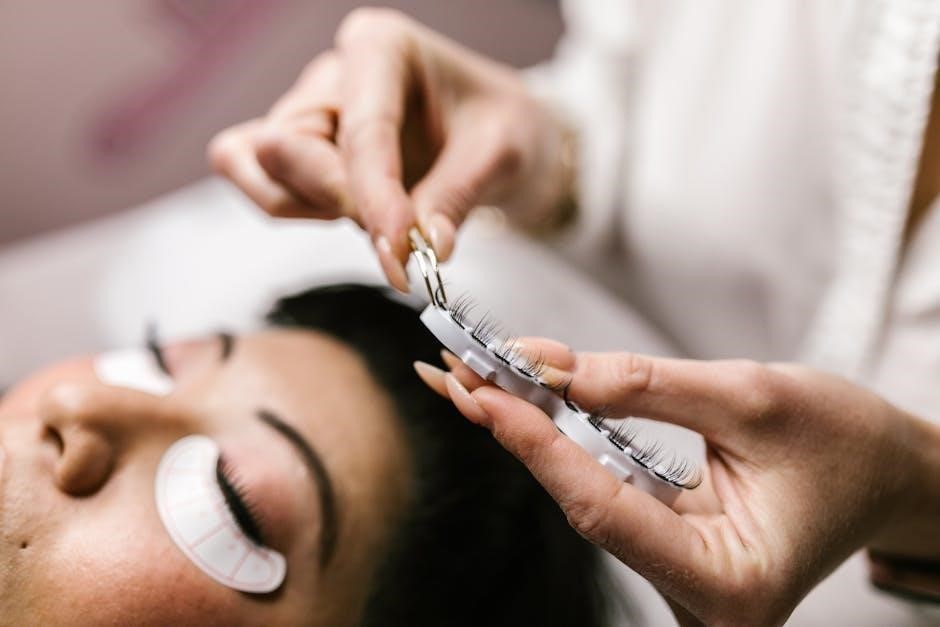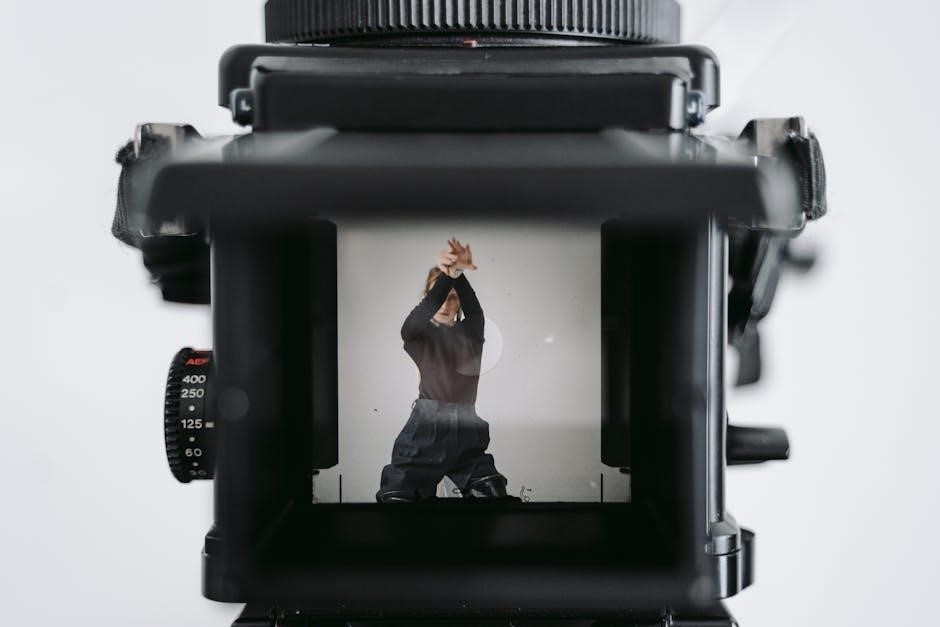
dr j professional projector manual
Dr. J Professional Projector Manual ─ Article Plan
This comprehensive guide details operation, setup, troubleshooting, and maintenance for the Dr. J Professional Projector, ensuring optimal performance and longevity.
Welcome to the world of high-definition projection with the Dr. J Professional Projector! This projector is engineered for discerning users demanding exceptional image quality, reliability, and versatility. Whether for home theater enthusiasts, business professionals, or educational institutions, the Dr. J delivers a stunning visual experience.
This manual serves as your complete resource, guiding you through every aspect of projector ownership – from initial setup and understanding its advanced features, to troubleshooting and maintaining peak performance. We’ve designed this projector with user-friendliness in mind, but a thorough understanding of its capabilities will unlock its full potential.
Prepare to be captivated by vibrant colors, sharp details, and a truly immersive viewing experience. This manual will empower you to confidently operate and optimize your Dr. J Professional Projector for years to come. Let’s begin!
Unboxing and Initial Setup
Carefully unpack your Dr. J Professional Projector and verify all components are present. Retain the original packaging for potential future transport or warranty claims. Before connecting any cables, place the projector on a stable, level surface with adequate ventilation. Avoid direct sunlight or excessive dust.
Inspect the projector for any visible damage incurred during shipping. If damage is present, immediately contact your retailer or our customer support team. Connect the power cable to a grounded outlet. Do not power on the projector yet! We’ll cover initial settings shortly. Ensure the ventilation slots are unobstructed to prevent overheating.

This initial setup phase is crucial for ensuring optimal performance and longevity. Following these steps will prepare your projector for a seamless and enjoyable viewing experience. Let’s proceed to the package contents checklist to confirm everything is accounted for.
Package Contents Checklist
Verify the following items are included in your Dr. J Professional Projector package:
- Dr. J Professional Projector Unit
- Power Cable (Region Specific)
- Remote Control (with Batteries)
- HDMI Cable (1.8m / 6ft)
- User Manual & Quick Start Guide
- Lens Cap
- Warranty Card
Carefully compare the contents of your box with this list. If any items are missing or damaged, please contact our customer support immediately at the number listed on the warranty card. Do not attempt to operate the projector if essential components are missing.
Retain all packaging materials, including the foam inserts, for potential future transport. Proper documentation of missing or damaged items will expedite the replacement process. A complete package ensures a smooth setup and optimal performance from your new projector.
Initial Power-On and Basic Settings
Connect the power cable to the projector and a grounded outlet. Press the power button located on the projector unit or the remote control. The projector will initiate its startup sequence, which may take up to 30 seconds.
Upon initial power-on, you’ll be prompted to select your preferred language. Use the arrow keys on the remote to navigate and the ‘Enter’ button to confirm. Next, adjust the focus using the focus ring on the lens until the image appears sharp. Roughly position the projector to achieve a basic image size and shape.
Access the ‘Source’ menu using the remote to select your input source (e.g., HDMI1, HDMI2). Basic keystone correction may be necessary at this stage for a rectangular image. Further refinement will be covered later. Ensure adequate ventilation around the projector during operation.
Understanding the Projector’s Features
The Dr. J Professional Projector boasts a suite of features designed for versatile performance. Key among these is its high-quality optical engine, delivering vibrant colors and sharp detail. The projector incorporates advanced lamp technology for extended lifespan and consistent brightness.

Its flexible lens shift capabilities allow for image positioning without physical adjustments to the projector’s location. Digital keystone correction further refines image geometry. Multiple connectivity options, including HDMI and USB, cater to diverse source devices.
Built-in speakers provide basic audio, while dedicated audio outputs enable connection to external sound systems for enhanced immersion. Several pre-set picture modes optimize the image for various viewing conditions. Understanding these features unlocks the projector’s full potential.
Lens Shift and Zoom Capabilities
The Dr. J Professional Projector features both horizontal and vertical lens shift, offering significant flexibility in image placement. This allows you to adjust the image position without physically moving the projector or distorting the picture. Lens shift is particularly useful when mounting the projector above or below the screen centerline.
Combined with a generous zoom range, these capabilities simplify installation in various room sizes and configurations. The zoom function lets you adjust the image size without altering the projection distance dramatically. Use the zoom ring to fine-tune the image to your screen size.
Carefully utilize both lens shift and zoom for optimal image alignment and a professional-looking setup. Refer to the on-screen menu for precise control and adjustment options.
Keystone Correction – Horizontal & Vertical
Keystone correction is a vital feature for rectifying image distortion when the projector isn’t perfectly aligned with the screen. The Dr. J Professional Projector offers both horizontal and vertical keystone correction to address these issues.
Vertical keystone corrects for images that are taller or shorter than intended, typically caused by angling the projector up or down. Horizontal keystone addresses distortion when the projector is positioned to the left or right of the screen center.
While keystone correction can fix alignment problems, excessive correction can slightly reduce image sharpness. It’s best to minimize keystone adjustment by physically positioning the projector as squarely as possible to the screen. Access keystone settings through the projector’s on-screen display menu for precise adjustments.
Connectivity Options Explained

The Dr. J Professional Projector boasts a versatile range of connectivity options to accommodate various source devices. Understanding these connections is crucial for optimal setup and functionality.
This projector features multiple HDMI inputs, supporting high-definition video and audio from Blu-ray players, gaming consoles, and streaming devices. A USB port enables direct media playback from USB drives and facilitates firmware updates; For audio, you’ll find both inputs and outputs, allowing connection to external sound systems for enhanced audio performance.
Additionally, a VGA port provides compatibility with older analog devices. Carefully matching your source device’s output to the projector’s corresponding input ensures a stable and high-quality connection. Refer to the rear panel diagram for precise port locations;
HDMI Inputs & Outputs
The Dr. J Professional Projector is equipped with multiple HDMI ports – specifically, two HDMI 2.0 inputs and one HDMI output. These ports support 4K Ultra HD resolution at 60Hz, ensuring crisp, detailed visuals from compatible sources.
HDMI inputs are designed for connecting devices like Blu-ray players, gaming consoles (PlayStation, Xbox), streaming media boxes (Roku, Apple TV), and laptops. The HDMI output allows you to pass the video signal to a receiver or external display, useful for creating a home theater setup.

Always use high-speed HDMI cables to guarantee optimal performance and prevent signal degradation. Ensure the source device’s HDMI output settings match the projector’s supported resolutions for the best possible image quality. Proper cable management is also recommended to avoid accidental disconnections.
USB Connectivity – Media Playback & Firmware Updates
The Dr. J Professional Projector features a USB port (USB 2.0) offering versatile functionality. Primarily, it enables direct media playback of compatible file formats, including images (JPEG, PNG), audio (MP3, WAV), and video (MP4, AVI, MKV). This allows for presentations or enjoying content without needing an external device.
Crucially, the USB port is also used for firmware updates. Regularly checking for and installing the latest firmware ensures optimal projector performance, bug fixes, and access to new features. Download firmware updates from the official Dr. J website and follow the on-screen instructions for installation.
Use a USB flash drive formatted in FAT32 or exFAT for compatibility. Avoid using the USB port for prolonged power delivery to other devices.
Audio Inputs & Outputs – Connecting External Speakers
The Dr. J Professional Projector offers flexible audio options to enhance your viewing experience. It includes a 3.5mm audio output jack for connecting to external speakers or a sound system. This is ideal for larger venues or when superior sound quality is desired.

For direct connection, use a standard 3.5mm audio cable. Ensure the volume on both the projector and external speakers is appropriately adjusted to prevent distortion. The projector also supports audio via HDMI, transmitting sound alongside the video signal when connected to compatible devices.
Image Settings and Calibration
Achieving optimal image quality with your Dr. J Professional Projector requires careful calibration of its image settings. Access these settings through the projector’s on-screen menu. Begin by adjusting Brightness and Contrast to establish a clear, defined image with rich blacks and bright whites. Sharpness controls the clarity of details; avoid excessive sharpening, which can introduce artifacts.
Color Temperature allows you to adjust the warmth or coolness of the image. Options typically include presets like ‘Cool’, ‘Normal’, and ‘Warm’. Gamma settings affect the mid-tone response, influencing the overall image depth. Experiment with these settings to find the configuration that best suits your viewing environment and personal preference.
Brightness, Contrast, and Sharpness Adjustments
Fine-tuning Brightness, Contrast, and Sharpness is crucial for a visually appealing image. Brightness controls the overall light output; increase it for brighter rooms, decrease for darker ones. Contrast determines the difference between the lightest and darkest parts of the image – higher contrast yields a more dynamic picture, but excessive contrast can lose detail in shadows.
Sharpness enhances the definition of edges. Start with a low setting and gradually increase it until the image appears clear without introducing unwanted artifacts like ringing or jagged edges. Use test patterns (available online) to objectively assess these adjustments. Remember, optimal settings depend on your screen material, ambient light, and source content. Small adjustments can make a significant difference!

Color Temperature and Gamma Settings
Color Temperature dictates the warmth or coolness of the projected image, measured in Kelvin (K). Lower values (e.g., 6500K) produce warmer tones, while higher values (e.g., 9300K) create cooler, bluer hues. A setting around 6500K is generally considered standard for accurate color reproduction. Gamma controls the relationship between input signal and displayed brightness.

Adjusting Gamma impacts shadow detail and overall image contrast. A Gamma of 2.2 is standard for most content, but you may need to experiment. Lower Gamma values brighten shadows, while higher values darken them. Incorrect Gamma settings can lead to a washed-out or overly dark image. Utilize calibration patterns to achieve accurate color and tonal response for the best viewing experience.
Troubleshooting Common Issues
Encountering problems with your Dr. J Professional Projector? This section addresses frequent issues and provides solutions. First, verify all cable connections are secure. If no image appears, confirm the projector is powered on and the correct input source is selected. A blinking indicator light often signals a problem – consult the error code list in the appendix.
For audio issues, check speaker connections and volume levels. If experiencing overheating, ensure adequate ventilation. Remote control malfunctions can often be resolved by replacing the batteries or re-pairing the remote. If problems persist, a factory reset (accessible through the menu) may resolve software glitches. Remember to consult the full troubleshooting guide online for more detailed assistance.
No Image Displayed – Potential Causes & Solutions
A blank screen can stem from several issues. First, ensure the projector is powered on and the power cable is securely connected. Verify the selected input source matches the connected device (HDMI, USB, etc.). Check the device sending the signal – is it powered on and outputting correctly? A faulty cable can also be the culprit; try a different cable.

If the lamp indicator is off or blinking, the lamp may need replacing (see the Lamp Replacement Procedure section). Also, confirm the projector isn’t in standby mode. If using a computer, check display settings and ensure the projector is recognized as a display. Finally, a blown fuse (check the access panel) could prevent operation. If none of these resolve the issue, contact customer support.
Distorted Image – Addressing Keystone & Lens Issues
Image distortion often arises from improper keystone correction or lens adjustments. Begin by utilizing the keystone correction features (horizontal and vertical – see Understanding the Projector’s Features) to square the image. Small adjustments can significantly improve clarity. If the distortion persists, examine the lens shift capabilities; slight movements can correct for off-center projection.
Ensure the projector is positioned correctly relative to the screen – a skewed angle necessitates keystone correction, but excessive correction degrades image quality. Also, verify the lens is clean (see Maintenance and Care). A dirty lens can cause blurring and distortion. Finally, confirm the input resolution matches the projector’s native resolution for optimal clarity. If problems continue, reset image settings to default.
Maintenance and Care
Regular maintenance extends the life of your Dr. J Professional Projector and maintains optimal image quality. Dust accumulation is a primary concern; power off and unplug the projector before cleaning. Use a soft, dry cloth to gently wipe the exterior housing. Never use liquids directly on the projector.
The lens requires particular care. Utilize a dedicated lens cleaning cloth and solution (avoid harsh chemicals) to remove smudges and fingerprints. Periodically check the air filters (located on the rear or bottom of the unit) and clean or replace them as needed – clogged filters cause overheating. Finally, remember the lamp has a limited lifespan (see Lamp Replacement Procedure) and should be replaced when it begins to dim or flicker.
Cleaning the Lens and Projector Housing
Maintaining a clean lens and housing is crucial for optimal performance. Always power off and disconnect the projector from the power source before commencing any cleaning. For the housing, use a soft, lint-free cloth lightly dampened with a mild detergent solution. Avoid abrasive cleaners or excessive moisture.
The lens demands more delicate handling. Use a specialized lens cleaning kit, consisting of a lens brush and cleaning solution designed for optical surfaces. Gently brush away any loose dust particles, then apply a small amount of cleaning solution to the cloth (not directly onto the lens!). Wipe in a circular motion, avoiding excessive pressure. Inspect the lens for streaks and repeat if necessary. Ensure the lens is completely dry before powering on the projector.
Lamp Replacement Procedure
Replacing the lamp requires careful attention. First, ensure the projector is completely cooled and disconnected from power. Locate the lamp access panel – consult the projector’s diagram in this manual. Unscrew the panel and carefully remove the old lamp module. Avoid touching the new lamp’s glass surface with bare hands; use the provided gloves or a clean cloth.

Align the new lamp module correctly and secure it with the screws. Replace the lamp access panel. Crucially, reset the lamp timer within the projector’s menu settings after installation. Failure to do so will result in inaccurate lamp life tracking. Dispose of the old lamp responsibly, following local regulations for electronic waste. Incorrect installation can damage the projector, so proceed cautiously.
Advanced Features & Settings
The Dr. J Professional Projector boasts several advanced settings for experienced users. Explore the ‘Picture Modes’ – including Cinema, Dynamic, and Game – each optimized for specific viewing environments. Customize these modes or create your own presets. Delve into the ‘Menu System’ to access features like 3D keystone correction, advanced color management, and detailed image settings.
Utilize the ‘Source Detection’ function for automatic input switching. The ‘Eco Mode’ extends lamp life while reducing power consumption. Experiment with ‘OverScan’ settings to adjust image size and eliminate potential border issues. Remember to save your preferred settings to a user profile for quick recall. Regularly check for firmware updates via USB to unlock new features and improve performance.
Utilizing Picture Modes for Different Environments
The Dr. J Professional Projector offers pre-calibrated ‘Picture Modes’ designed for diverse viewing conditions. ‘Cinema’ mode delivers accurate colors and high contrast in darkened rooms, ideal for movies. ‘Dynamic’ mode maximizes brightness, suitable for well-lit spaces or daytime viewing. ‘Game’ mode minimizes input lag, providing a responsive experience for gaming.
‘Presentation’ mode enhances clarity for slideshows and business presentations. ‘User’ modes allow for complete customization. Adjust brightness, contrast, color temperature, and sharpness within each mode to perfectly match your environment. Experiment to find the optimal settings for your specific needs. Consider ambient light levels when selecting a mode – brighter rooms require higher brightness settings.
Exploring the Projector’s Menu System
Accessing the on-screen menu is done via the ‘Menu’ button on the remote control. The main menu is logically organized into sections: ‘Image’, ‘Sound’, ‘Display’, ‘Source’, ‘System’, and ‘Information’. Navigate using the arrow keys and select options with ‘Enter’.
The ‘Image’ section controls brightness, contrast, color settings, and picture modes. ‘Sound’ adjusts volume and audio settings. ‘Display’ manages keystone correction, lens shift, and aspect ratio. ‘System’ allows for language selection, factory reset, and firmware updates. ‘Information’ displays lamp hours and projector model details. Use the ‘Exit’ button to return to the previous menu or close the menu entirely.